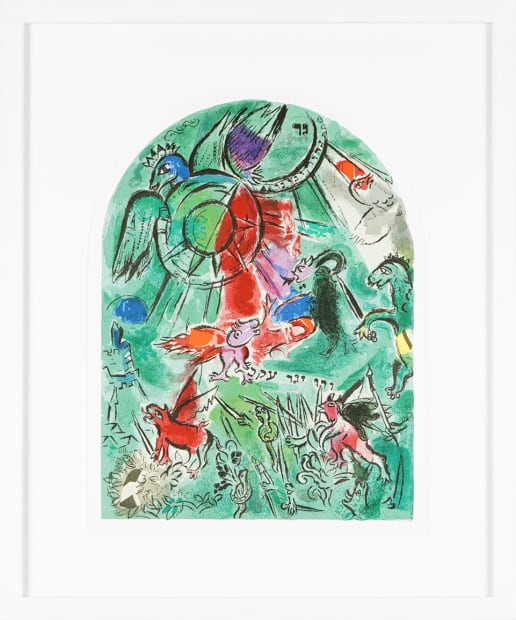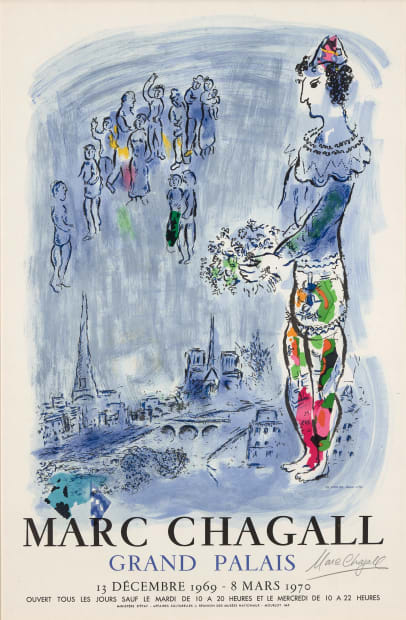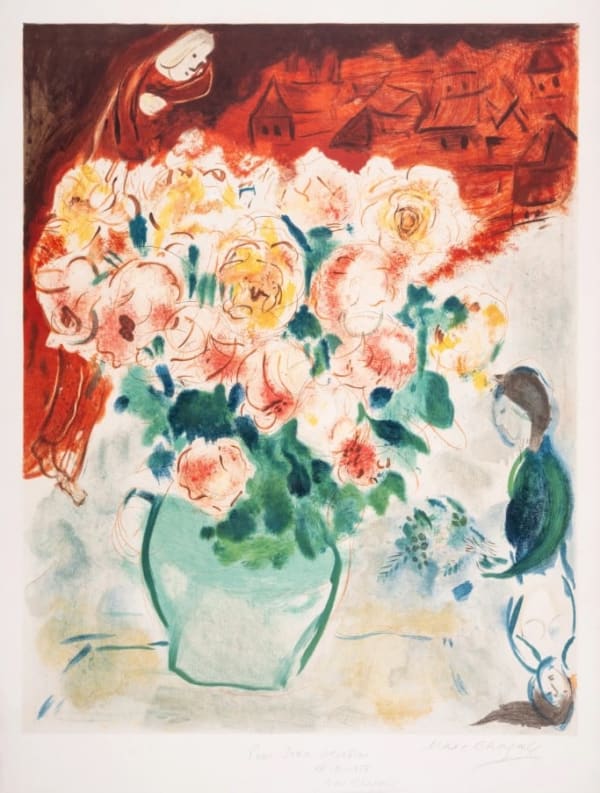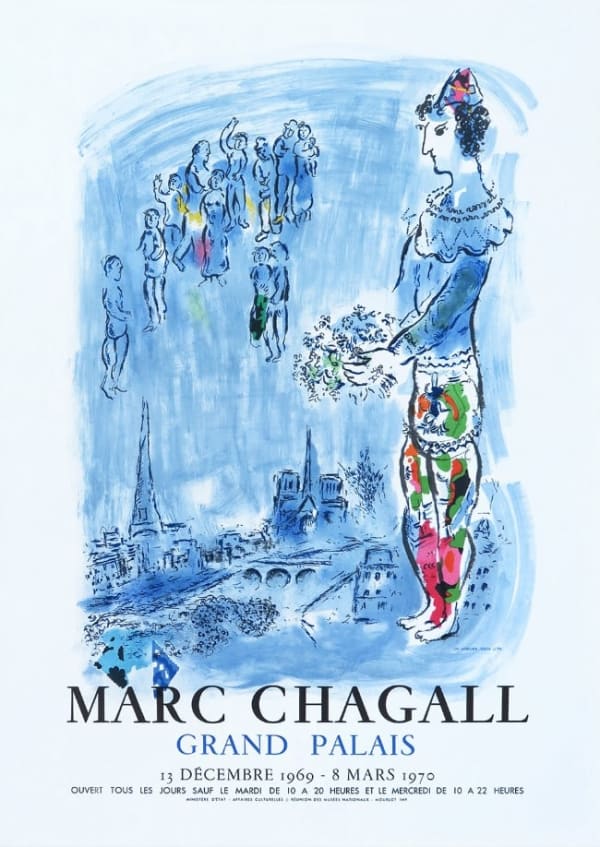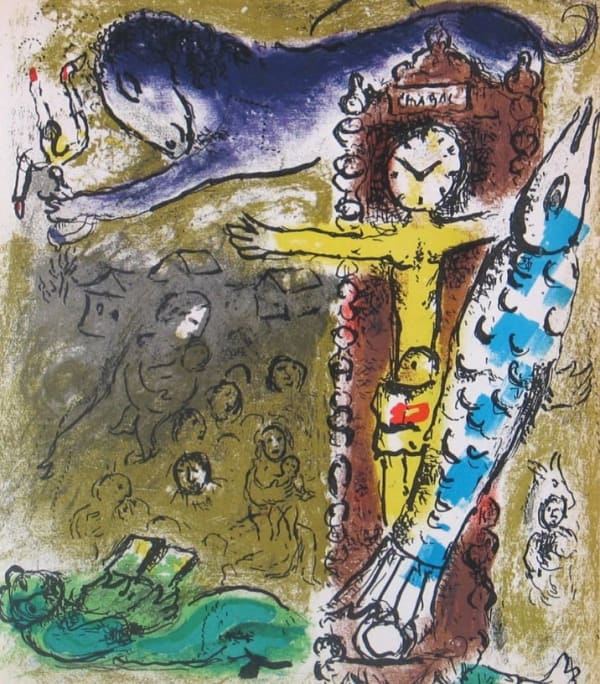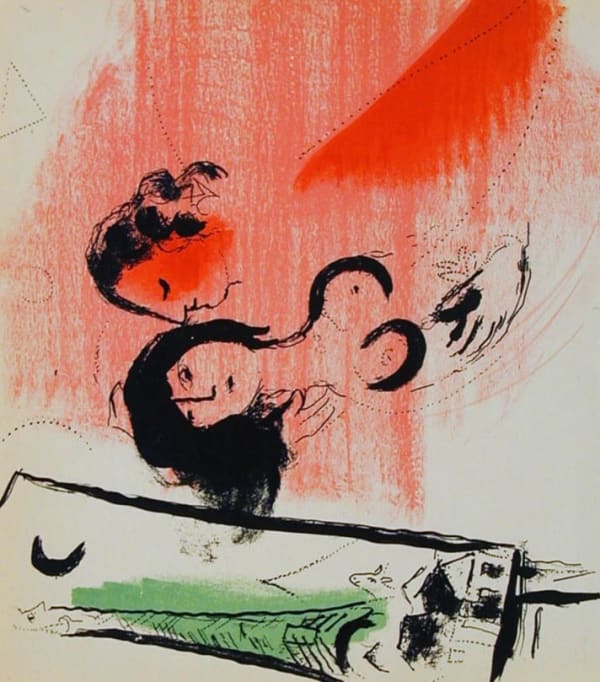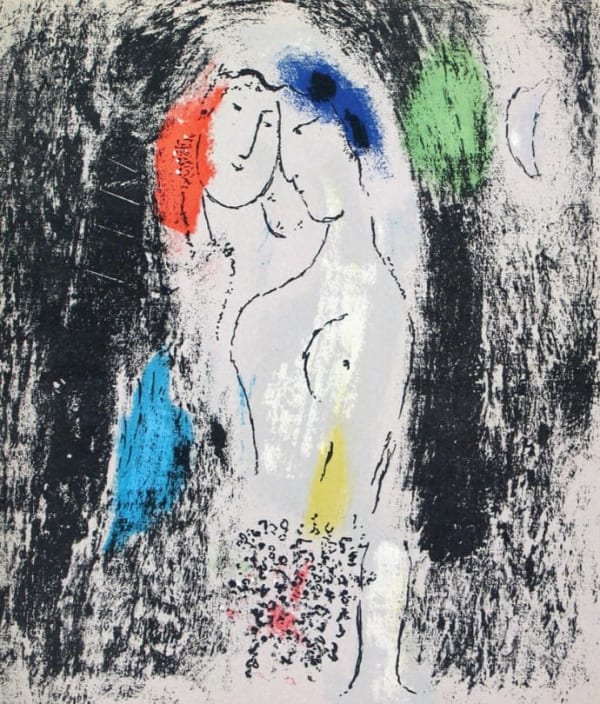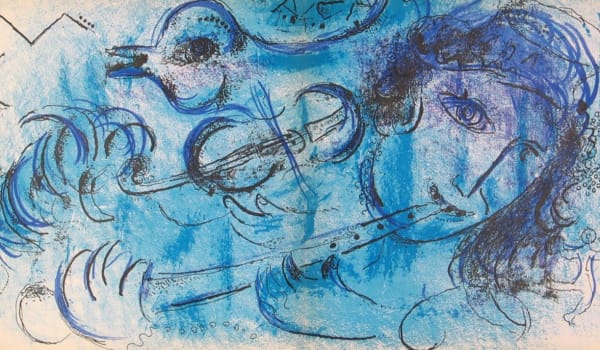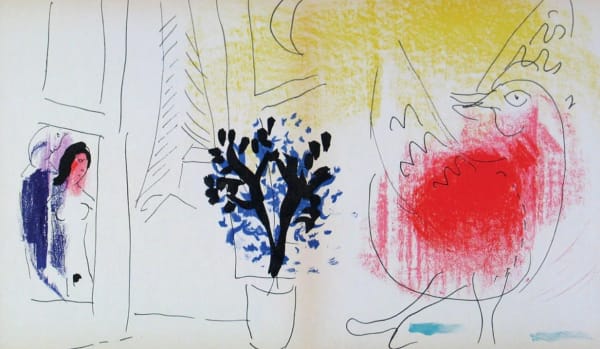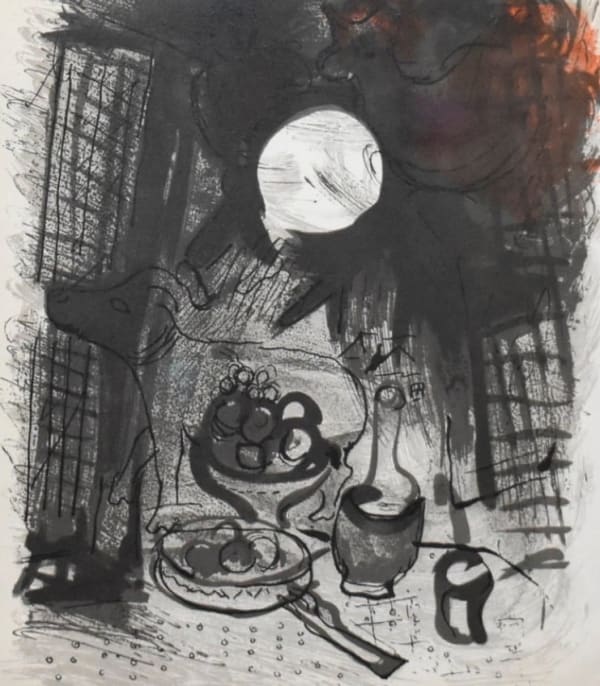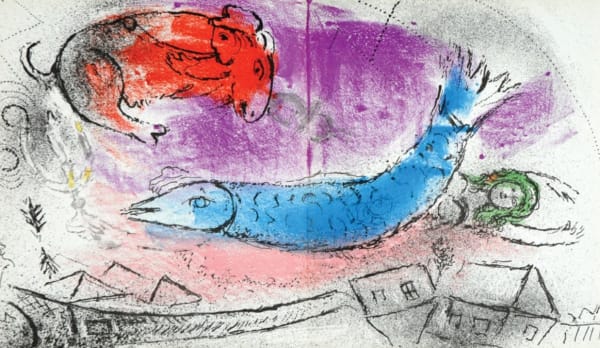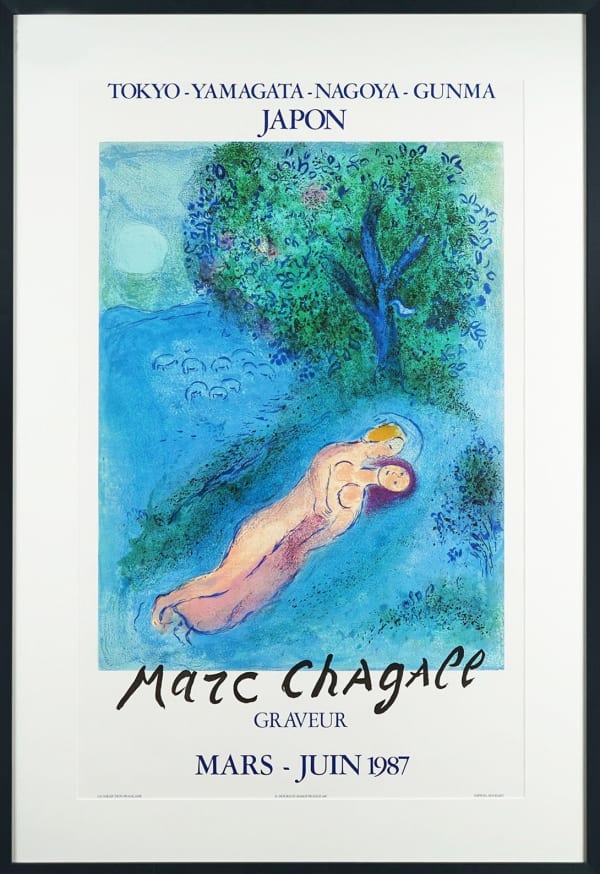-
-
-
Why Collect Chagall?
"Something would have been lacking in my life if...I had not at a certain stage become involved in engraving and lithography. Each time I had a lithographic stone or a copper plate in my hands, I felt that I was touching a talisman to which I could entrust all my sorrows and all my joys." - Chagall
-

-

-

-
Whether you seek the poetry of his romantic narratives, the mysticism of his Bible illustrations, the spectacle of his circus imagery, or the pure imaginative delight of his village scenes, Chagall's lithographs offer a perfect encapsulation of his singular talents. As Sorlier's quote conveys, the artist's childlike sense of wonder and ability to make "lithography born again" with each print make him a highly covetable force in 20th century art.
-
-
-
Price and Value
SEE OUR COLLECTIONAs one of the most recognised figures in Modern art, Chagall has long been a stalwart of museum collections and international auctions. He is firmly established as a Blue-chip artist. The record price paid for one of his paintings is $28.4 million, set in 2017. At auction, Chagall's lithographs and etchings range from £2,000 for unsigned works to over £200,000 for rare, hand-coloured pieces or complete portfolios.
You don’t need to be a millionaire to own a Chagall though. At Hidden, you can find a curated selection of authentic Chagall prints starting at £1,050.
-
PRACTICAL TIPS ON PURCHASING A CHAGALL
-
-
-
Hidden's Chagall Collection
SEE HIDDEN'S COLLECTIONAt Hidden, we are passionate about preserving Chagall's lasting legacy by offering a premier collection of his original prints. Our experts thoroughly vet and document every work to guarantee authenticity and quality.
"With every stone, lithography is born again...I have had the rare privilege of seeing Chagall at work, and it cannot be denied that, at times, it seems as if an angel has entered the workshop." - Charles Sorlier
Whether you seek the mysticism of his Bible illustrations, the poetry of his Paris scenes, the magic of his circus imagery, or the tenderness of his romantic narratives, Hidden is your trusted source for building an exceptional Chagall portfolio. Explore our Chagall works to begin or expand your investment today.
-
A Selection from our Collection
-
 Marc Chagall, Le Bouquet, 1955
Marc Chagall, Le Bouquet, 1955 -
 Marc Chagall, The Magician of Paris, 1970£ 1,250.00
Marc Chagall, The Magician of Paris, 1970£ 1,250.00 -
 Marc Chagall, L’ange sur fond bleu I (Signed), 1969£ 3,500.00
Marc Chagall, L’ange sur fond bleu I (Signed), 1969£ 3,500.00 -
 Marc Chagall, Vence (Signed), 1953£ 3,750.00
Marc Chagall, Vence (Signed), 1953£ 3,750.00
-
 Marc Chagall, Christ in the Clock, 1957£ 900.00
Marc Chagall, Christ in the Clock, 1957£ 900.00 -
 Marc Chagall, Green Eiffel Tower, 1957£ 900.00
Marc Chagall, Green Eiffel Tower, 1957£ 900.00 -
 Marc Chagall, Lovers in Grey, 1957£ 900.00
Marc Chagall, Lovers in Grey, 1957£ 900.00 -
 Marc Chagall, The Flute Player, 1957£ 1,150.00
Marc Chagall, The Flute Player, 1957£ 1,150.00
-
 Marc Chagall, The Ladder, 1957£ 900.00
Marc Chagall, The Ladder, 1957£ 900.00 -
 Marc Chagall, The Red Rooster, 1957
Marc Chagall, The Red Rooster, 1957 -
 Marc Chagall, Brown Still Life, 1957
Marc Chagall, Brown Still Life, 1957 -
 Marc Chagall, Maternity with Centaur, 1957
Marc Chagall, Maternity with Centaur, 1957
-
-
What next?
Subscribe to receive our weekly newsletter.
Be the first to know about new artwork, exhibitions, events and offers.
* denotes required fields
Sign up now to get exclusive early access to new inventory before it hits our website. As a subscriber, you'll also receive advance notice about upcoming art fairs, events, and special offers. You can read our privacy policy here.














